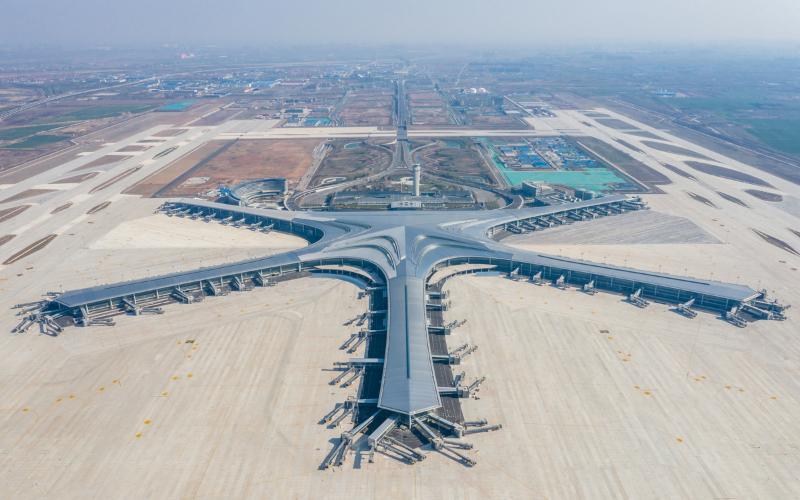Back | Blog posts overview
Winds of change
08/04/2021
How can a building with a roof as thin as paper withstand typhoon force winds? A new airport in Qingdao, China, shows the world how it's done: with molybdenum-alloyed stainless steel.
Known for its famous beer, Qingdao is also a major industrial and financial centre. With its new infrastructure, the city hopes to attract more air travellers. The star-shaped airport features the world's largest continuously welded stainless steel roof, just 0.5 millimetres thick.

© Cheunghyo/Moment Unreleased via Getty Images
Metal roofs have been preferred for covering large structures, such as airports, stadiums, convention centres, as well as commercial and industrial buildings, for decades. These roofs are light, easily and efficiently assembled, attractive and have relatively low-life cycle costs, making them crucial in large venue construction.
However, conventional standing-seam metal roofs are susceptible to failure in adverse weather conditions such as high winds and heavy rain. A technique known as continuous-seam welding takes the resilience of metal roofs to a new level. Qingdao's new Jiaodong International Airport incorporates this flexible welding method on its ferritic stainless steel roof.
The Jiaodong airport will be one of the most advanced commercial airports in China, twice the size of London's Heathrow. It will serve over 35 million passengers annually, with flights taking off and landing as frequently as every 73 seconds. The airport is about 60 kilometers from the city centre, however, it is only 25 kilometers from the Yellow Sea and even closer to Xiaocha Bay, exposing it to high levels of corrosive salts. The city also experiences seasonal strong rains, high wind pressure and moderate typhoons. To welcome travellers in all kinds of weather, stainless steel, with its exceptional ductility, corrosion-resistance and yield strength, spans the entire roof of the building.
The unique properties of continuously welded stainless steel roofs greatly expand the possibilities for design and location of new projects. Unlike traditional standing-seam roofs, these roofs are completely watertight, making them suitable even for flat, low slope and undulating roofs. Securely anchored to the substructure, these roofs can withstand major storm force winds. When an appropriate molybdenum-containing stainless steel is selected, they also resist corrosion, even in marine environments like Qingdao. The incredible thinness and flexibility achieved with stainless steel roofing enable designs once thought impossible to properly function.
Discover more about the how this continuous-seam welding method for stainless steel roofs offers an effective solution at Jiaodong airport in our MolyReview article Winds of change.
Back | Blog posts overview

